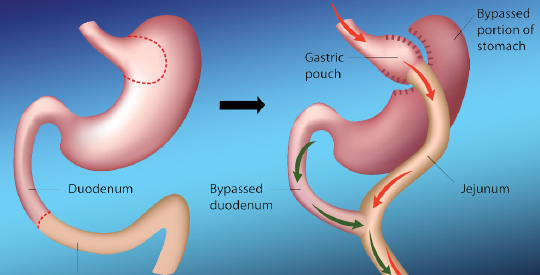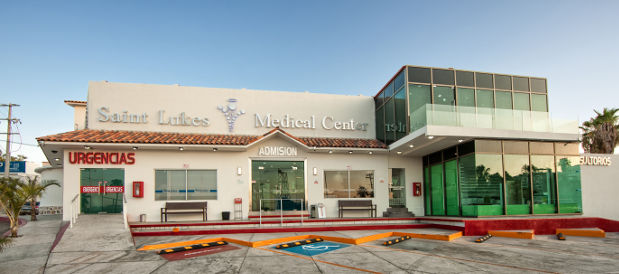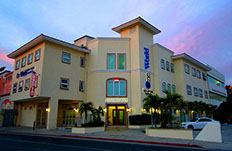
Emergencies 24 hrs.
+ 52 (624) 142 5911

Info@saintlukeshospitals.com
THE LEADING HOSPITAL GROUP FOR HEALTH CARE AND MEDICAL TOURISM IN LOS CABOS, MEXICO












MEDICAL SPECIALTIES
Roux-en-Y Gastric Bypass

Educational Video
Roux-en-Y Gastric Bypass

Saint Luke’s Hospital is part of the Saint Luke’s Hospital Group, providing top quality medical care to the local community in Los Cabos for more than 12 years.
The hospital has state-of-the-art equipment and facilities and the surgeons have been carefully selected from some of the best surgeons in Mexico, all board certified with specialty licenses in their field of expertise.
Saint Luke’s is committed to being the premier hospital group for health care and medical tourism in Mexico.
SAINT LUKE'S Travel Price
Save up to 65% on prices in the United States.
 This procedure is the most common gastric bypass surgery performed in the U.S. Gastric bypass surgery will help you drastically lose weight by changing the way the stomach and small intestines cope with the food you eat.
This procedure is the most common gastric bypass surgery performed in the U.S. Gastric bypass surgery will help you drastically lose weight by changing the way the stomach and small intestines cope with the food you eat.
This surgical weight-loss procedure reduces the volume of the stomach so that the patient feels full after eating a small amount of food. It also bypasses part of the intestinal tract so that fewer nutrients are absorbed by the body. In this procedure, a small portion of the upper stomach is stapled to form a small pouch which holds only about 1 oz of food. This will limit the amount of food you can consume.
Next, the Y-shaped portion of the small intestine is connected to the pouch which will allow the food to bypass the duodenum and part of the jejunum (this surgical technique is called a "Roux-en-Y"). This will reduce the calorie intake and absorption of nutrients and can effectively promote weight loss. The procedure is performed laparoscopically, which involves using smaller incisions that can aid quicker recovery.
Post-surgery weight loss is impressive, patients can lose up to 70% of their extra weight. In 12 to 18 months. Many health related problems can improve, such as high blood pressure, diabetes, high cholesterol, sleep apnea and many other weight related disorders. It also provides an improvement in the quality of life.
Dr. Carlos Arturo Diaz heads up the Bariatric Division at Saint Luke’s Hospital. He has successfully performed more than 200 bariatric single incision laparoscopic surgeries, and uses state of the art equipment and the latest technology to provide excellent results at the most affordable prices.
Procedure
The patient lies down to expose the stomach, and anesthesia is administered. The skin at the surgical site is cleaned. The surgeon creates a series of small incisions in the abdominal area and inserts a laparoscopic camera and tools into the abdominal cavity. The camera allows the surgeon to view the procedure on a monitor.
The surgeon places a line of surgical staples across the stomach to divide it into two compartments. The upper compartment, about the size of a thumb, will be used for food digestion. The lower compartment will not be able to receive food, but will continue to produce digestive juices to aid the digestion process. Several inches below the stomach, the small intestine is divided into two sections. The portion below the incision is pulled up to reach the stomach's small upper pouch. The surgeon creates an opening in the pouch and surgically attaches the intestine to the pouch, creating a new pathway for food. The remaining piece of the small intestine, which hangs from the stomach's lower pouch, is surgically attached to the rerouted section. This allows for digestive juices and other fluids to drain out of the lower stomach and into the intestinal tract. The incisions are closed with sutures or surgical staples. The stomach is then bandaged.
The surgery takes about two to four hours. After surgery the patient is given pain relievers and closely monitored in the hospital during recovery. The stay in the hospital is normally for 2 to 4 days and return to normal activity with two to four weeks.
Risks
Gastric bypass surgery is a major procedure and can have many risks which include:
• Blood clots in the legs
• Serious infection or bleeding
• Digestive problems
• Leak in surgical attachments to the intestines
• Breathing problems
• Heart attack or stroke during/after surgery
Risks can be minimized by following the surgeon's instructions before and after surgery.
This information should be used only as a guide to your medical treatment. All specifics will be discussed with your surgeon at your consultation. For more information about gastric bypass surgery contact Saint Luke's by using the “Ask a Question” form on this page.



Dr. Carlos Diaz
Bariatric Surgeon
A general surgeon with
… More
Dr. Beltran
Bariatric Surgeon
A general surgeon with
… More
Meet the Surgeons
Patient Testimonials

Saint Luke's is the Largest Private Hospital Group in Los Cabos, Mexico, with state-of-the-art facilities in Cabo San Lucas and San Jose del Cabo.
Saint Luke’s is the No. 1 Hospital Group for Medical Tourism in Los Cabos.
Ask a Question
Get Information or a Quote on the service or medical procedure of interest to you.
Contact Us:
San José del Cabo B.C.S.
Calle Ignacio Zaragoza S/N, Col. Centro
+52 (624) 142 5911
Cabo San Lucas, B.C.S.
Calle Aguajitos Fracc. C Lote-12, Col. Arcos del Sol.
+52 (624) 143 0911
Saint Luke’s Hospitals ®
All Rights Reserved 2015


